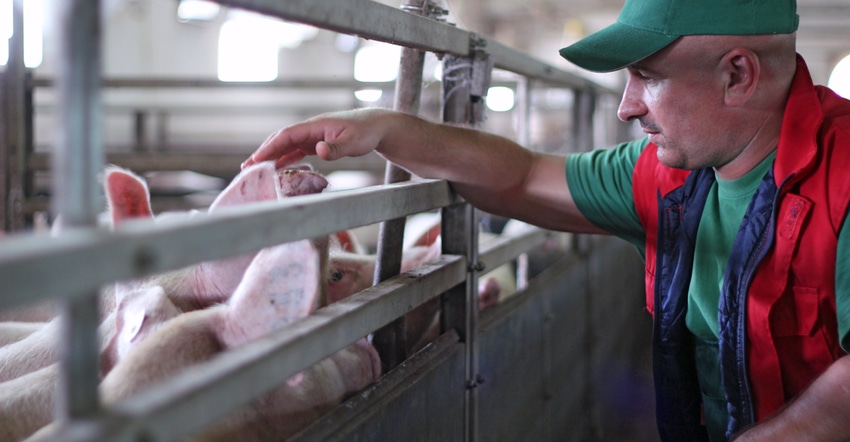Paying attention to details after the Veterinary Feed Directive makes the difference
January 9, 2019

Sponsored Content
When you manage 130,000 sows in 10 states, along with 1.6 million wean-to-harvest pigs per year, you better know how to maximize production. It’s an ongoing process, but AMVC, headquartered in Audubon, Iowa, has seen significant improvement in overall production since the Veterinary Feed Directive (VFD) went into effect in January 2017.
“A systems approach to production has been our model all along,” says Jason Hocker, a veterinarian and partner at AMVC. “Knowing the VFD was coming into play, we were proactive in implementing protocols and procedures to be ahead of that deadline, so it was a pretty seamless transition for us.”
From the time the gilt enters the herd until the pig is harvested, Hocker works to make sure everything is aligned from a health perspective to optimize growth and performance. Even though the overall use of feed medications is lower since January 2017, Hocker notes productivity has improved. He and the other health professionals at AMVC have incorporated different strategies and interventions to minimize the use of feed medications except when they’re most needed.
“Performance today is by far superior to what we would have had two years ago,” says Hocker. “We’re seeing average daily gains and feed conversions that we’d never seen before.”
Three Key Improvements
Hocker credits these three key improvements for the most impactful changes:
Get the Right Flow: “This is the No. 1 priority,” Hocker points out. “We’re trying to get consistent numbers into an air space. We’re matching up the air space with the wean so it’s a one-time event, not a multiple-time event.”
Tighten Down Biosecurity: Hocker says even when you think you have good biosecurity, you can find breaches. It’s a continual process that includes rigorous training so employees understand the importance of strict biosecurity.
Communication: “Explaining the ‘whys’ to the employees at the sow farm, and to the farmers raising the pigs from wean to harvest, is critical,” Hocker emphasizes. Employees need to see the big picture, so they have an understanding of why their jobs are important. Training protocols help employees learn and understand why different practices and procedures are critical to their farm’s success.
Trending to Better Health
Hocker points out that pig health ebbs and flows between healthy and sick. “Overall, from a performance standpoint, we’re better at managing the various diseases that are out there.”
It’s not just about the medications, though. “We implemented a lot of other management practices and strategies at the sow-herd level to streamline the health of the pigs and minimize the number of stressors pigs experience in their lives. In doing that, we’re seeing the potential of the genetics we have today because the performance is really fantastic,” he explains.
© 2018 Elanco or its affiliates.
EM-US-000045
pghlth 12337
About the Author(s)
You May Also Like

.png?width=300&auto=webp&quality=80&disable=upscale)

